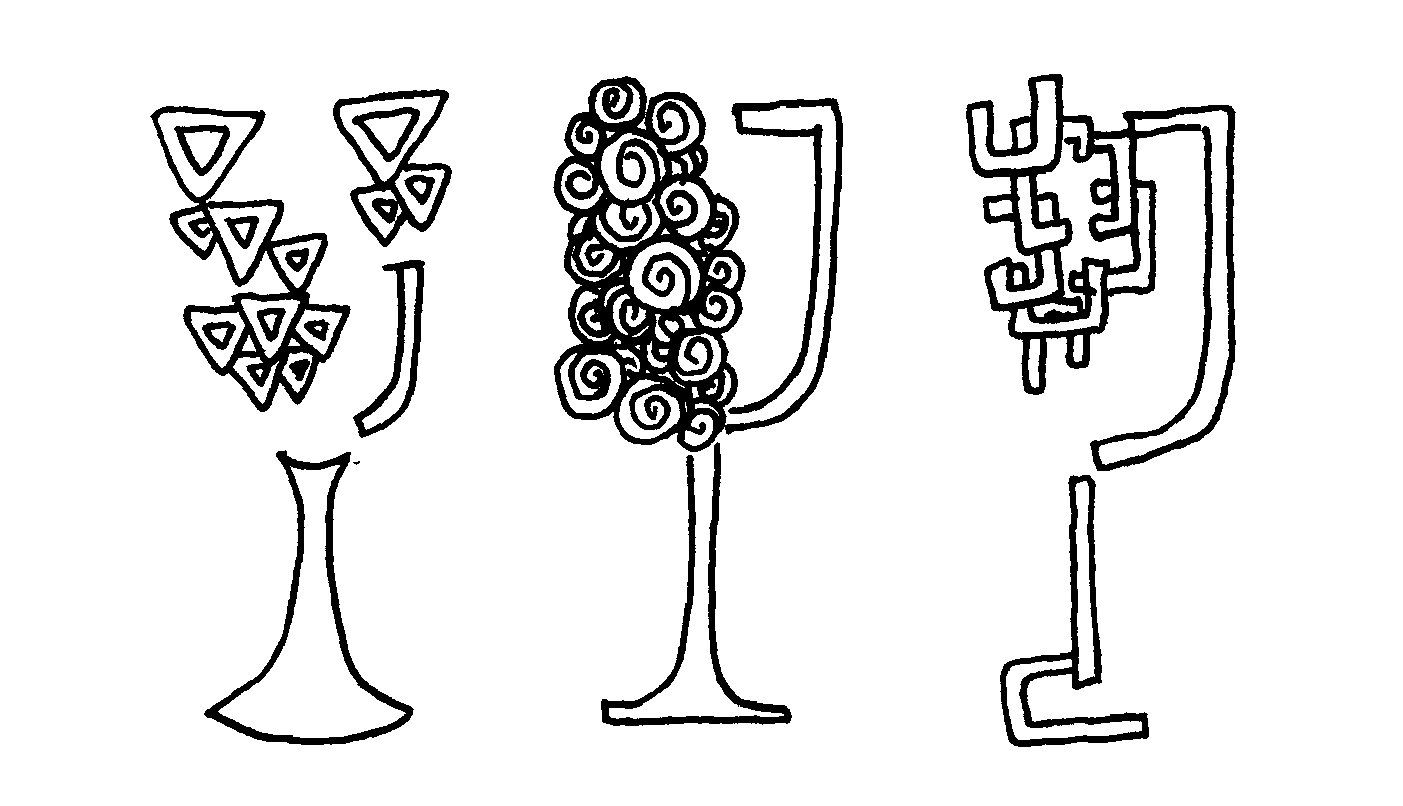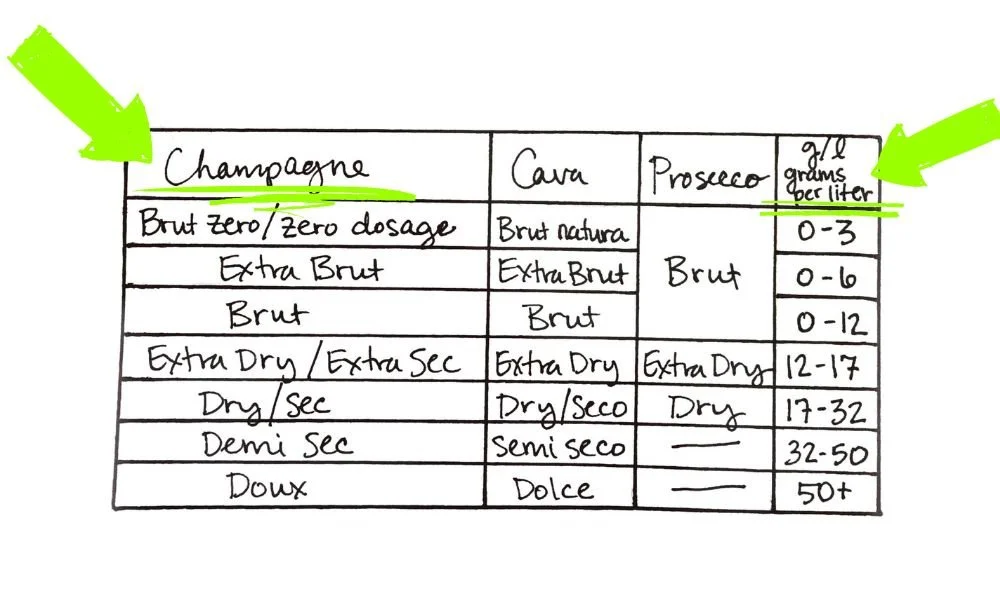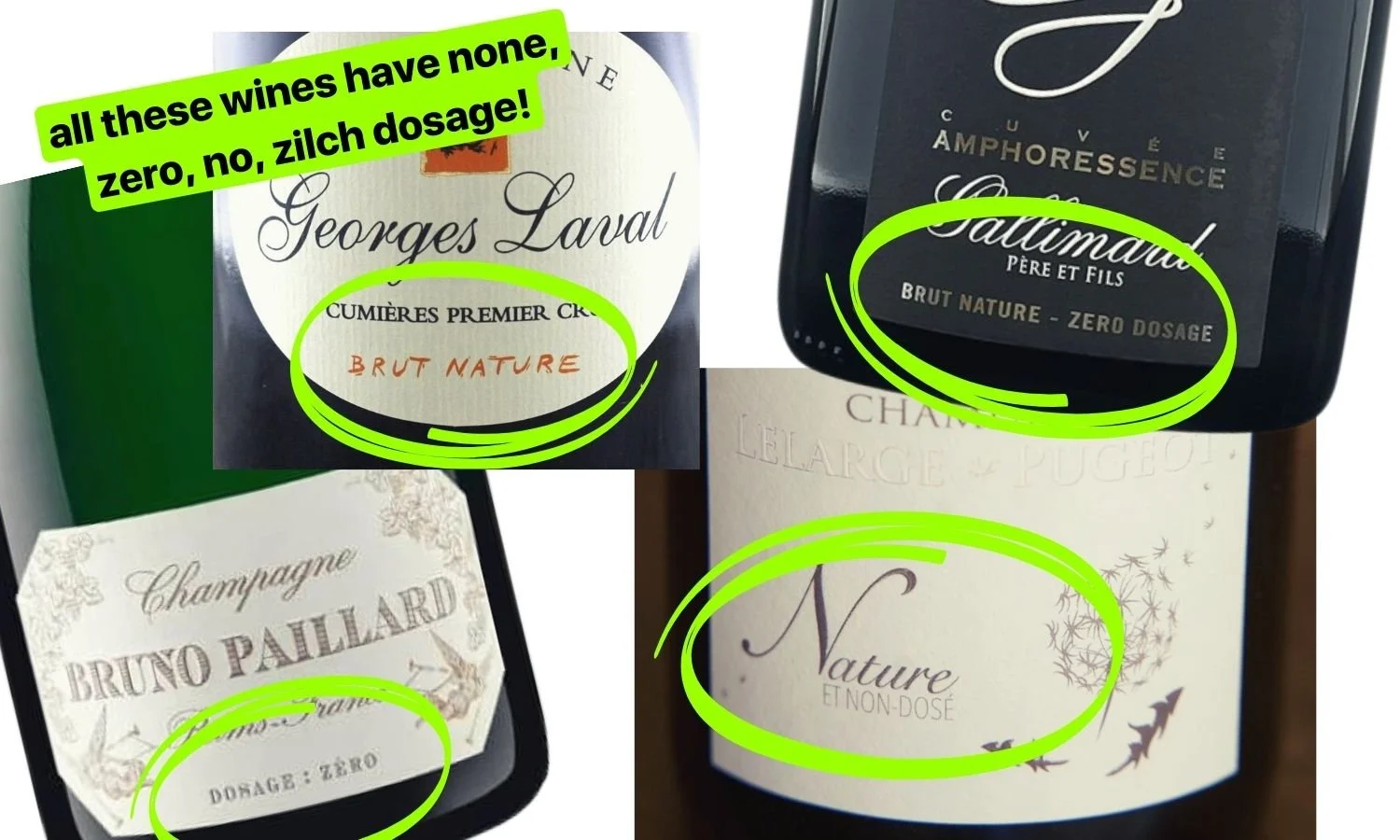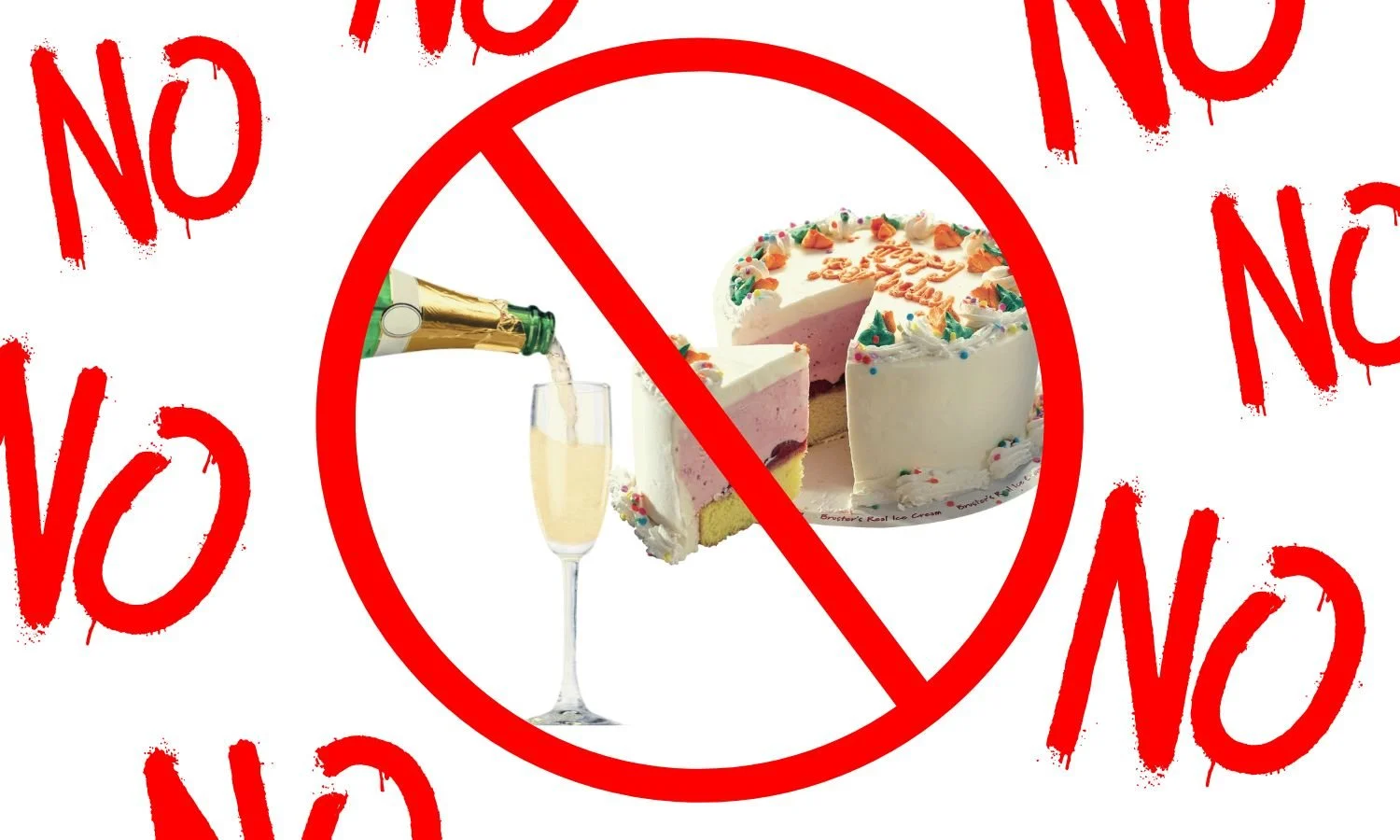What’s The Best Champagne Part 2: Is It Dry?
Let’s talk about sugar in champagne.
Traditionally, champagne has added sugar! 🍭🍭🍭 😱
(Oh, for Part One on how to find the best champagne, ie, styles and vintage, read up here!)
Now don’t freak out—this isn’t the same as a kid pouring sugar onto their parents’ plain Special K cereal to create that fizzy crack.
Known as dosage (or if you like real fancy French terms, liqueur d'expedition), we’re talking about a small mixture of sugar added to the wine just before corking. (A dash of wine will also be added to top up the bottle as a small amount is always lost in the production process.)
So, why the sugar? It’s all about balance.
The so-called sparkling wine base (that’s the still wine the bubbly is made from) is usually very acidic. That’s because being so far north, the grapes don’t always mature fully, which means that they contain more acid when picked. The dosage is used to calm down this acid. It’s similar to adding a bit of sugar or milk to coffee —it won’t necessarily make it sweet but balances the bitterness instead.
☕️ + 🍭 = ☺️
Dosage is a crucial element in the production process as it can ultimately affect the final taste of the champagne (some winemakers describe it as adding the finishing touches to a sculpture).
Some bubbles don’t have any added sugars (see Brut Nature below)—these will be dry, but they can also be unbalanced and too aggressively acidic to properly enjoy. It’s actually quite the debate, especially when you cross over into natural-wine circles.
How dry or sweet is it?
Many of you have probably heard the term ‘brut’. Here’s where that word comes into play. Brut, and the rest of the following labels, are specifically telling us how much sugar is in the wine. They refer to how much sugar is added as well as any residual sugars left in the wine. (Note: these labeling categories are used across sparkling wine categories, not just in champagne.)
Ok, without further ado, the sweetness categories:
Brut Nature, Brut Zero, No Dosage
These all allow for 0-3 g/L (grams per liter) of sugar.
These are all terms for the same thing. These wines have no added sugar. It’s a growing trend, and one that is hotly debated with the champagne industry. It’s favored by natural wine producers who don’t like to add anything to their wines. They also argue that the terroir, rather than a certain ‘house style’, should define the champagne.
These are the driest of the dry; sometimes, if not done well, they can be unbalanced (ie, too sharp and acidic).
👉 What’s it for? Want a champagne that fits loosely in the natural, low-intervention category? That is said to express the terroir? Or are you looking for as little calories and added sugar as possible? Look for one with zero dosage.
These labels (Brut Nature/Zero Dosage/Dosage:Zero/Nature et Non-Dosé) all indicate the wine has had no dosage (zero added sugar)
Extra Brut
This is the second driest with an allowed 0-6 g/L.
👉 What’s it for? You want it super dry, but you don’t want to risk the possibility of it being too acidic and unbalanced (that you might find in a no-dosage champagne). Look for an Extra Brut.
Brut
Brut allows for 0-12 g/L.
Yes, I know, it is weird that all three of these so far mentioned start at 0 g/l. So a Brut can technically be just as dry as a Brut Nature. (How do you know for sure? You’ll have to Google the champagne and see if you can find a tech sheet that tells you the dosage.)
Keep in mind that Bruts, even though they have some added sugar, will not taste sweet. The sugar only balances the wine and they will still taste dry! Most champagnes you come across (ie, the well-known brands) will be Brut.
👉 What’s it for? You just want a dry champagne that also tastes balanced and delicious. No risks of it being too sharp. You like the roundness and fruitiness. Bruts are your friend.
Extra Dry
These allow for 12-17 g/L.
Here’s where the sugar starts coming out a tiny bit. You’ll probably notice more fruit flavors as well.
👉 What’s it for? You don’t need it to be über dry but you don’t really want a sweet wine either. You love the fruit flavors. You want something that’ll make the best fancy mimosas. Extra Dry is also the perfect pairing for cheese and charcuterie boards (especially if you are adding sweet elements like honey, dried fruit or fig jam).
Dry
Allows for 17-32 g/L. Confusingly, dry champagnes are actually off-dry.
Demi Sec
Demi Sec champagnes are very sweet, allowing 32-50 g/L of sugars.
Doux
These are full-on dessert champagnes with 50+ g/L of sugars.
(As a reference, an off-dry Riesling is usually around 9-18 g/L of sugar. A very syrupy, viscous dessert wine sipper, like Sauternes, has between 120-220 g/L. Coca Cola has 113 g/L.)
👉 What’s it for? The three sweet champagne categories (Dry, Demi Sec, and Doux) are for those of you wanting the sweet stuff. Or for those of you wanting to pair champagne with cake (or any other dessert); see below…
One last thing…
Hot Tip: The Biggest Mistake You Might Be Making With Your Champagne
I just can’t bear to not mention this as we talk about sweet champagnes. We here at Sunday School don’t really believe much in “right and wrong” or “good and bad” when it comes to wine. But this is an exception…
Never drink dry champagne (or any dry bubbly) with sweet desserts.
DON’T DO IT, FOLKS!
Having cake? Get a Demi Sec or at the very least a Dry (which is off-dry, see above chart) champagne. Trust me on this. The idea that a dry (not sweet) wine will balance sweetness in food is 100% a myth.
Any sweet dessert will make a dry (not sweet) champagne taste, literally, like lemon seltzer water. Don’t believe me? Try it. And make sure to have a sweet champagne on hand for after your experiment. The sweetness is both the wine and the dessert will cancel each other out and the flavors in both will pop. (Pinky swear.)
Phew, alright, we’ll stop there. Did we help you decipher some of those champagne label obscurities?
What kind of champagne will you be shopping for next? Let us know in the comments!
P.S. Are you a member of Sunday School Wine Society? We made you even more Champagne videos, and shopping guides, and downloadable cheat sheets, oh my. Learn Champagne like the back of your hand 👉









Champagne doesn’t always have to crowd the spotlight. There is a sparkling wine out there that is the perfect go-to bubbly that will consistently impress your friends, please your palate, and not burn holes in your pockets. Find out our absolute favorite bubbly for when you’re a lush on a budget.